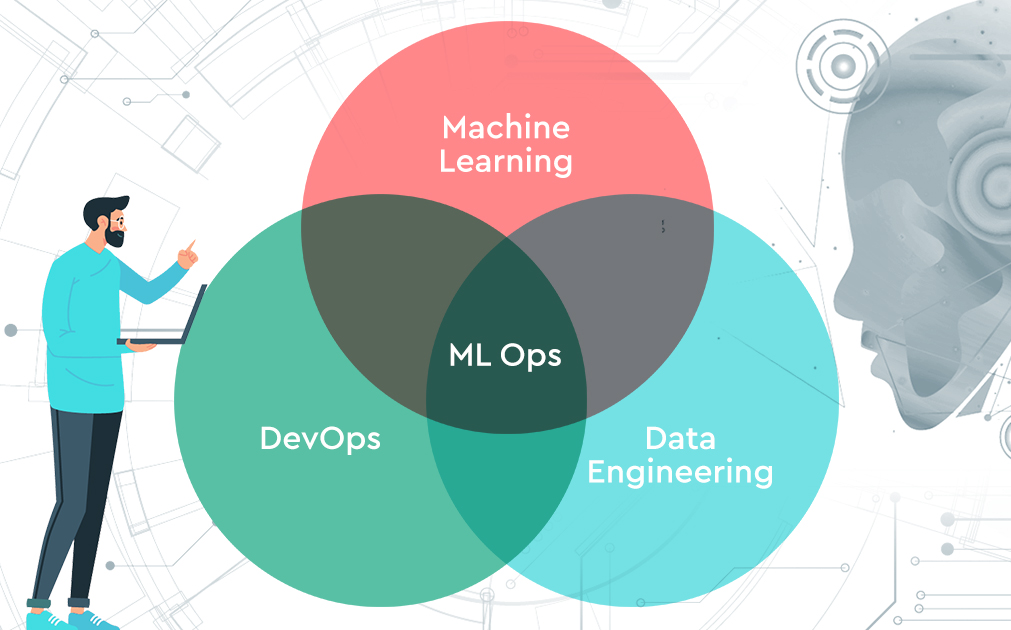1. Introduction to MLOps
In today’s rapidly evolving technological landscape, machine learning (ML) has become a cornerstone of innovation across various industries. From personalized recommendations on streaming platforms to predictive maintenance in manufacturing, ML models are driving significant value. However, developing an ML model in a research environment is vastly different from deploying it in a production setting. This gap between development and deployment necessitates a structured approach, leading to the emergence of MLOps.
MLOps, short for Machine Learning Operations, is a set of practices that aims to unify ML system development and operations. It seeks to automate, streamline, and optimize the end-to-end ML lifecycle, ensuring smoother transitions from experimentation to production and more efficient and robust ML systems. By applying best practices from software development to the ML lifecycle, MLOps addresses the complexities involved in deploying and maintaining ML models in real-world applications.
2. The Evolution of MLOps
Traditionally, ML models were developed in isolated environments, often by data scientists working independently from the operations teams. This siloed approach led to several challenges:
- Deployment Delays: Transitioning models from development to production was time-consuming and error-prone.
- Lack of Reproducibility: Inconsistent environments and data versions made it difficult to reproduce results.
- Maintenance Challenges: Monitoring model performance and updating models in response to changing data was cumbersome.
MLOps emerged as a solution to these challenges, drawing inspiration from DevOps practices in software engineering. By fostering collaboration between data scientists, ML engineers, and operations teams, MLOps facilitates the seamless integration of ML models into production environments. It emphasizes automation, continuous integration, and continuous delivery, ensuring that ML models are not only deployed efficiently but also maintained effectively over time.
3. Core Components of MLOps
Implementing MLOps involves several key components that collectively ensure the successful deployment and maintenance of ML models:
- Data Management and Preprocessing: Ensuring data quality, consistency, and versioning is crucial. MLOps emphasizes the use of pipelines to automate data ingestion, cleaning, and transformation processes.
- Model Training and Validation: Automated training pipelines allow for consistent model training using standardized datasets and parameters. Validation processes ensure that models meet predefined performance criteria before deployment.
- Continuous Integration and Deployment (CI/CD) for ML: Borrowing from software development practices, MLOps incorporates CI/CD pipelines tailored for ML workflows. This includes automated testing, integration of new code, and deployment of models to production environments.
- Monitoring and Maintenance of ML Models: Post-deployment, models need to be monitored for performance degradation, data drift, and anomalies. MLOps frameworks provide tools for real-time monitoring, alerting, and automated retraining of models as needed.
4. MLOps vs. DevOps
While MLOps and DevOps share common goals of automating and streamlining workflows, there are distinct differences:
- Complexity of Artifacts: Unlike traditional software, ML models are influenced by data, making them more complex to manage. MLOps addresses the challenges of data versioning and model reproducibility.
- Evaluation Metrics: ML models require continuous evaluation against dynamic datasets, necessitating specialized monitoring tools.
- Feedback Loops: MLOps incorporates feedback from model performance in production to inform retraining and updates, a concept less prevalent in traditional DevOps.
Despite these differences, integrating MLOps into existing DevOps pipelines can enhance the overall efficiency of deploying intelligent applications.
5. Benefits of Implementing MLOps
Adopting MLOps practices offers several advantages:
- Improved Collaboration: By bridging the gap between data science and operations teams, MLOps fosters a collaborative environment conducive to innovation.
- Faster Deployment: Automation of workflows reduces the time from model development to deployment, accelerating the delivery of ML-powered solutions.
- Enhanced Model Accuracy and Reliability: Continuous monitoring and automated retraining ensure that models remain accurate and reliable over time.
- Scalability and Reproducibility: Standardized processes and tools enable organizations to scale their ML initiatives while ensuring consistent and reproducible results.


